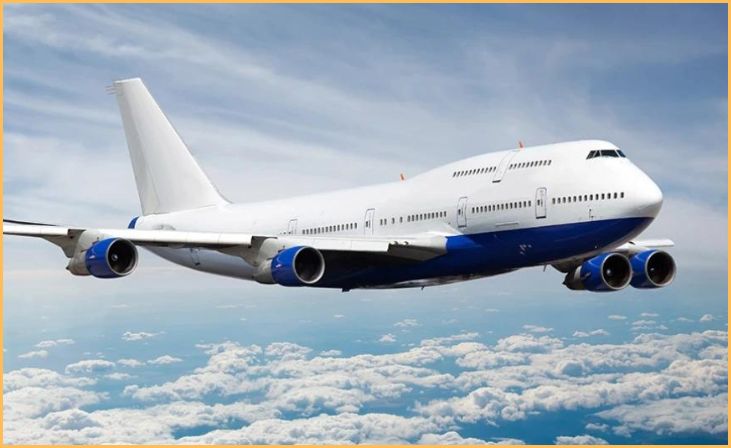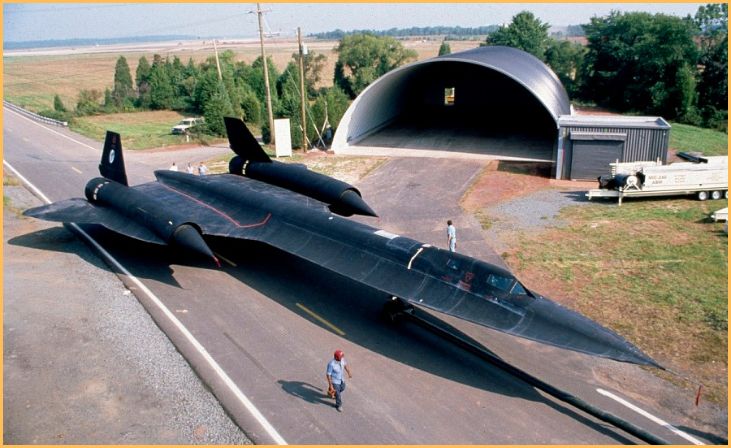The evolution of aviation has been marked by iconic aircraft that transcended their times, leaving an indelible mark on history. These remarkable flying machines, each a testament to innovation and engineering prowess, have not only shaped the course of warfare but have also revolutionized commercial travel and exploration.
From the pioneering days of the Wright Brothers’ historic flight to the sleek supersonic Concorde and the cutting-edge F-22 Raptor, these aircraft represent milestones in technological achievement.
This exploration delves into the enduring legacy of select aircraft that have stood the test of time, tracing their impact on aviation, from the dawn of flight to the present day. Their stories resonate as a tribute to human ingenuity and the perpetual quest for mastery of the skies.
Iconic Aircraft That Have Stood the Test of Time
Boeing 747

The Boeing 747, introduced in 1969, is an iconic long-range commercial aircraft recognized for its distinctive hump. Known as the “Queen of the Skies,” it revolutionized air travel with its capacity to carry a large number of passengers.
With a timeless design, the 747 has served as a flagship for numerous airlines and played a pivotal role in shaping the aviation industry. Its enduring popularity and continued operation, particularly in cargo transport, highlight its lasting impact on global air transportation.
Also, Read – Most Famous Paintings in the World
Lockheed Martin C-130 Hercules
The Lockheed Martin C-130 Hercules, a versatile military transport aircraft, has been a stalwart in aviation since its first flight in 1954. Renowned for its adaptability, the C-130 excels in various roles, including troop and cargo transport, medical evacuation, and aerial firefighting.
Its ability to operate from short and unpaved airstrips makes it indispensable for both military and humanitarian missions. With over six decades of service, the C-130 Hercules remains a symbol of reliability and efficiency, embodying the concept of a true workhorse in the world of military aviation.
Concorde
The Concorde, a supersonic passenger airliner, made its maiden flight in 1969, embodying the pinnacle of aviation technology. A joint venture between the UK and France, this sleek and iconic aircraft operated at twice the speed of sound, offering unparalleled transatlantic travel experiences.
With its distinctive delta-wing design, the Concorde could reach Mach 2.04, enabling it to cross the Atlantic in under three hours. Despite its impressive capabilities, the Concorde faced challenges, leading to its retirement in 2003. Nevertheless, it remains a symbol of innovation, luxury, and a bygone era in commercial aviation history.
Cessna 172
The Cessna 172, introduced in 1956, stands as an enduring symbol of general aviation’s accessibility and reliability. This four-seat, single-engine aircraft has become one of the most popular training planes globally.
Renowned for its stability and ease of operation, the Cessna 172 is a cornerstone for flight training schools and private pilots. With countless units produced over the decades, its timeless design and versatility make it a preferred choice for both novice aviators and seasoned pilots. As a dependable workhorse, the Cessna 172 continues to soar the skies, embodying the essence of personal and instructional flying.
Lockheed SR-71 Blackbird

The Lockheed SR-71 Blackbird, an engineering marvel, soared into service in 1966 as a strategic reconnaissance aircraft. Recognized for its incredible speed and altitude capabilities, it could surpass Mach 3 and fly at altitudes that rendered it nearly invulnerable to enemy threats.
With its sleek design and innovative technology, the Blackbird set numerous speed records that still stand today. Despite its retirement in 1998, the SR-71 remains an icon of Cold War-era aviation and a testament to Lockheed’s cutting-edge engineering. Its legacy endures as a symbol of aerospace innovation and the pursuit of unparalleled performance in military reconnaissance.
Douglas DC-3
The Douglas DC-3, a legendary aircraft, first took flight in 1935 and went on to revolutionize air travel. Renowned for its rugged durability and versatility, the DC-3 played a pivotal role during World War II as a military transport and later became a symbol of commercial aviation’s golden age.
Its timeless design and efficient performance contributed to the growth of global air transportation. Even today, some DC-3s continue to fly, a testament to its enduring legacy. The DC-3’s impact on aviation history remains unparalleled, earning it a well-deserved place as one of the most influential and iconic aircraft of all time.
Also, Read – Most Popular Websites in the World
Boeing 737
The Boeing 737, a cornerstone of commercial aviation since its debut in 1968, stands as the best-selling jetliner in history. Revered for its reliability and efficiency, the 737 has undergone multiple generations, evolving to meet the demands of modern air travel.
Widely utilized for short to medium-haul flights, its versatility has made it a preferred choice for airlines worldwide. With over 10,000 units produced, the 737’s enduring popularity is a testament to its timeless design and continual innovation.
As an integral part of global air transportation, the Boeing 737 has left an indelible mark on the aviation industry, embodying the essence of a successful and enduring aircraft.
Spitfire
The Supermarine Spitfire, an iconic fighter aircraft, soared into history during World War II as a symbol of British resilience and innovation. First flown in 1936, its elegant design and exceptional performance played a pivotal role in the Battle of Britain.
With its distinctive elliptical wings and powerful Rolls-Royce engine, the Spitfire became a symbol of the Royal Air Force’s success. Its agility and combat prowess made it a favorite among pilots, and its legacy endures in the hearts of aviation enthusiasts worldwide. The Spitfire remains an enduring symbol of courage and skill, representing a crucial chapter in the annals of aviation history.
Airbus A380
The Airbus A380, introduced in 2005, is a colossal double-deck, wide-body airliner that redefined long-haul air travel. Boasting the capacity to carry over 800 passengers, it became the world’s largest passenger aircraft.
The A380’s distinctive design prioritizes passenger comfort and fuel efficiency. Despite its groundbreaking technology, the A380 faced commercial challenges, and production ceased in 2021.
Nevertheless, its legacy as an engineering marvel endures, showcasing Airbus’s ambition and innovation in aviation. The A380 leaves an indelible mark on the industry, symbolizing an era of superjumbo jets and pushing the boundaries of what is possible in modern air transportation.
F-16 Fighting Falcon

The F-16 Fighting Falcon, a multirole fighter jet introduced in 1978, stands as a symbol of versatility and combat excellence. Developed by Lockheed Martin, its agility and adaptability have made it a mainstay in the air forces of numerous nations.
The F-16’s design emphasizes maneuverability, speed, and a diverse range of mission capabilities, including air-to-air combat and ground attacks. With over 4,600 units produced, its combat-proven performance and continuous upgrades have sustained its relevance for decades.
The F-16 remains a cornerstone of modern aerial warfare, embodying the principles of innovation and effectiveness in a dynamic global defense landscape.
Conclusion
In closing, these iconic aircraft stand as pillars of human achievement, defining eras and pushing the boundaries of what was once deemed impossible. From the Wright Flyer to the F-22 Raptor, their legacies are woven into the fabric of aviation history, inspiring generations.
As we reflect on their enduring impact, we anticipate the future with excitement, knowing that the spirit of innovation will continue to propel us forward into new frontiers of flight and exploration. The sky, it seems, is not the limit, but rather the canvas on which our aspirations and ingenuity continue to soar.
FAQs
An iconic aircraft is one that has left a lasting impact on aviation history, often due to technological innovation, historical significance, or widespread cultural recognition. These aircraft are celebrated for their contributions and influence on the development of aviation.
The Wright Flyer is iconic as it represents the first powered, controlled, and sustained flight in 1903. This historic achievement marked the beginning of modern aviation, showcasing the feasibility of powered flight and shaping the course of aeronautical development.
Description for this block. Use this space for World War II accelerated advancements in aviation technology, leading to the development of iconic aircraft like the Supermarine Spitfire, North American P-51 Mustang, and Boeing B-17 Flying Fortress. These planes played crucial roles in the conflict and left a lasting impact on aviation design.your block. Any text will do. Description for this block. You can use this space for describing your block.






